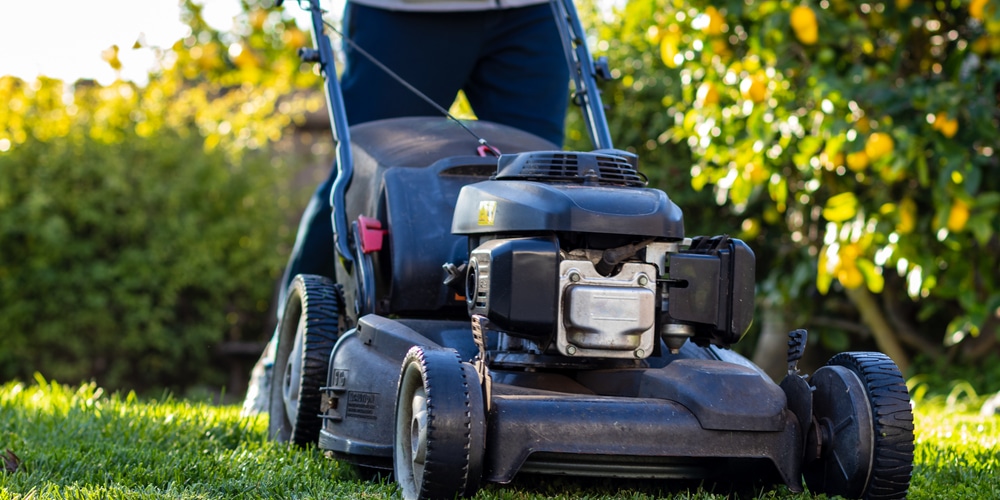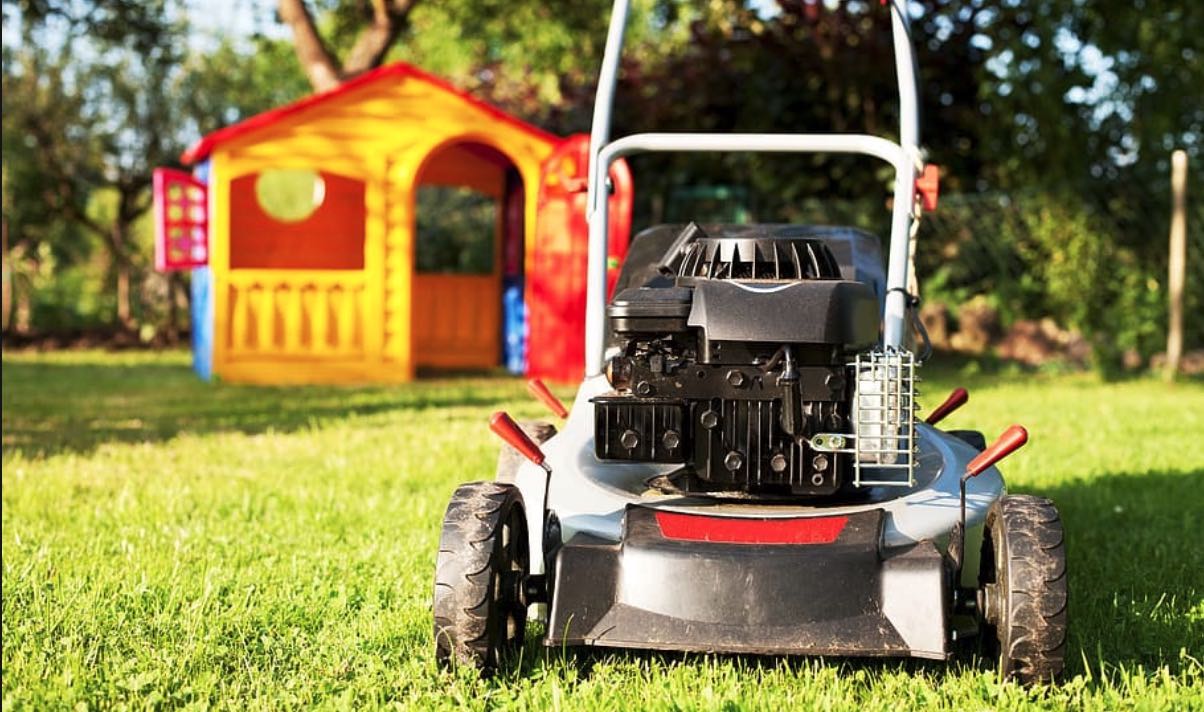Are you concerned that you might be getting ready to put the wrong gas in your mower? That’s reasonable. Almost without exception, gas mowers take regular 87-octane pump gas.
The good news is that gas-powered mowers are incredibly resilient and will usually handle premium with zero issues. What you don’t want to do is put gas that has higher than 10% ethanol. Gas mowers don’t like that.
Most Mowers Use 87 Octane
Alright, folks, let’s mow down the confusion about octane ratings and your trusty lawn warrior. Most mowers are designed for 87 octane gas because this is the standard ‘regular’ fuel that gets your mower revving without the bells and whistles—and let’s be honest, your mower is not a Ferrari.
Octane is all about preventing engine knock, and here’s the kicker: higher octane doesn’t necessarily mean more power or better performance for your mower. Manufacturers create these engines to be simple, efficient, and cost-effective, which means 87 octane gas fits the bill perfectly.
Now, what happens if you pour in that premium 91 or 93? Mowers will typically run just fine on higher-octane fuel, but it’s like giving a dog a diamond—it doesn’t know what to do with it. You’ll just be burning money instead of weeds.
Remember the golden rule: Avoid fuels with more than 10% ethanol (E10). Ethanol can cause moisture accumulation and corrosion in your mower’s fuel system—it’s the mean green in the garden scene.
Keep it simple, save some green, and stick with 87 octane. Your mower—and your wallet—will thank you!
What Happens If You Use Premium Fuel in a Lawn Mower?
Alright, green-thumbed readers, let’s dive into the lush world of fuel faux pas. Suppose you accidentally treat your lawn mower to a top-tier tipple of premium fuel. What’s the aftermath of this high-octane happy hour?
First thing’s first, don’t sweat it—your mower isn’t headed for the junkyard just yet. These sturdy yard champs can generally burn through the posh stuff without throwing a piston. In fact, using premium fuel in your mower likely won’t cause any immediate harm, except perhaps to your perception of money well spent.
Here’s the reality: Your standard mower engine doesn’t need the high-octane content found in premium fuel. It’s designed for regular unleaded, and all those extra octane points are simply going unappreciated, like pearls before swine—or in this case, blades of grass.
But wait, there’s a twist in the turf! While premium gas won’t damage your mower, it doesn’t improve performance or efficiency either. High-octane fuels resist knocking in high-compression engines, but since most mowers run at lower compressions, the benefits of premium gas are as useful as a screen door on a submarine.
In sum, if you’ve gone grand and filled your mower with premium, the only thing you’ve trimmed is your wallet. The mower will run, but it’s akin to wearing a tuxedo to a backyard BBQ—overdressed and underutilized. Keep it casual and save that premium for engines that can strut its stuff. Happy mowing!
Most Mowers Can’t Use E85
E85 is a no-go for most lawn mowers. Despite its eco-friendly vibe and generally lower price, this corn-rich cocktail is not friends with your average grass slayer.
Why the leafy leeriness, you ask? E85 is made of 85% ethanol, and let’s just say ethanol and small engines have the kind of relationship that could inspire country breakup songs. Ethanol is tougher on rubber and plastic, things your mower has plenty of, especially in the fuel system. It can lead to swelling, cracking, and the kind of breakdowns that fuel mechanic’s vacation funds.
Not to mention, ethanol has a penchant for attracting moisture, which is about as good for engine internals as a monsoon season for a picnic. Corrosion and fuel separation can turn your mower’s insides into the site of an unanticipated science experiment.
Add to this the fact that ethanol contains less energy compared to gasoline, and your mower’s engine won’t be getting the power it needs to cut at peak proficiency. Simply put, E85 can lead to poor engine performance, difficulty starting, and a shorter engine life.
So, leave E85 to flex-fuel vehicles that flaunt it like a green badge of honor. For your mower, stick to the straight and narrow path of E10 or less. Keep your mower running longer and your grass in ‘lawn order’ by choosing the right fuel. 🌾
Make Sure to Stabilize Your Fuel Over the Winter (Or Drain It)
As the leaves fall and you store your mower for the winter slumber, there’s some key horticultural housekeeping to attend to. Fuel doesn’t age like fine wine—it degrades like forgotten leftovers.
If you’re planning on letting your mower hibernate with a full belly, add a fuel stabilizer before winter hits. This is the mower equivalent of a warm blanket and a bedtime story. Fuel stabilizer keeps the gas fresh and prevents the formation of gum and varnish, those nasty elements that can clog up the carburetor faster than you can say “Is it spring yet?”
Just pour the recommenced amount of stabilizer into the gas can, then run the mower to ensure the treated fuel gets through the entire system. It’s like giving your mower a flu shot before flu season.
But hold on, there’s another school of thought: Drain it dry. If you’re not big on additives, run your mower until the tank is as empty as a scarecrow’s thoughts. Doing this means there’s nothing to go bad because there’s nothing there at all; it’s the dietary cleanse of the mower world.
Remember, fuel left untreated over the winter can turn into a carburetor’s nightmare come spring. Whether you go for stabilizer or the full drain, don’t let old fuel turn your mower into a metal paperweight. Get ahead of the game, and you’ll be ready to roll when the grass gets cheeky again. 🚜
Last update on 2024-04-30 / Affiliate links / Images from Amazon Product Advertising API


